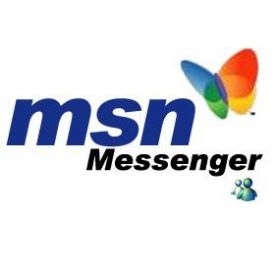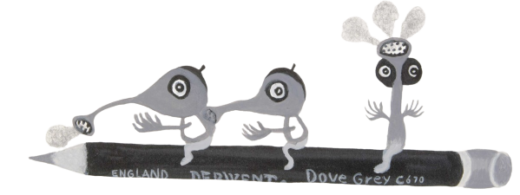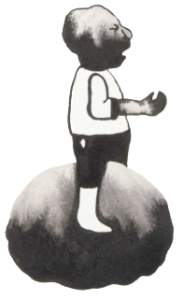A discussion of the judgment of the judge in preliminary relief proceedings of the Court of The Hague dated 7 May 2008 in the Microsoft/Unicaresoft case.
Background
Microsoft is holder of a number of Benelux and Community trademarks for the sign MSN for, inter alia, software and Internet-related goods and services. It uses the trademark as a collective name for various online services, including the chat programs MSN Messenger and MSN Live Messenger. In the Netherlands these are the most widely used chat programs.
Unicaresoft BV has developed software which enables the restriction of the use of the Internet and of chat programs. The program, which is mainly meant for parents who want to set limits on the chatting behavior of their children, was initially offered under the name Msnlock. Unicaresoft was also the holder of the domain names msnlock.nl, msnlock.be, msnlock.eu, msnlock.com, msnlock.org, msnlock.net and msnlock.info.

After Microsoft had sent a cease and desist letter on 28 December 2007 in which it objected to the use of the sign msnlock, the name of the software was changed into Benzoy. Unicaresoft, however, refused to assign the domain names, because it wanted to continue using them for the offering of its software. Next, Microsoft initiated preliminary relief proceedings with the assistance of Sophie van Loon and Christien Wildeman of Kennedy Van der Laan. Microsoft claimed that Unicaresoft had to cease the infringements of its MSN trademarks and had to assign all its msnlock domain names to Microsoft. The judge in preliminary relief proceedings found for Microsoft.
Msnlock Infringes Trademark
Unicaresoft infringes Microsoft’s MSN trademark pursuant to Article 2.20 paragraph 1 under b of the Benelux Treaty on Intellectual Property (“BTIP”) and Article 9 paragraph 1 under b of the Community Trademarks Regulation (“CTR”).
It is true that Unicaresoft does not use msnlock as a name for its products, but the judge in preliminary relief proceedings observed that also the use of the sign in the domain names is considered to be trademark use for the software: “After all, under the sign msnlock it wants to direct the public to its website where it offers its own product Benzoy. It is therefore the sign under which it markets the product.”
The judge in preliminary relief proceedings ruled that the sign msnlock is similar to Microsoft’s MSN trademarks because it is composed of (the same) characteristic sign MSN, in combination with a descriptive part “lock”. The judge ruled that Unicaresoft’s software is also highly similar to the goods for which the MSN trademark has been registered. There is a likelihood of confusion too. The public may think that Unicaresoft’s product originates from Microsoft. In addition, it is relevant that Unicaresoft’s software is “complementary” to (inter alia) Microsoft’s chat programs as an additional service: parental care.
MSN Is Not a Generic Name
Unicaresoft defended itself with the argument that MSN has become a generic name for chatting and claims that “msn-en” (“to msn”) is a verb that is used for chatting in general. In case law it has been accepted that if there is a generic name, the scope of protection of a trademark may be smaller. However, in the opinion of the judge in preliminary relief proceedings the verb ” msn-en”‘ is not a generic indication for chatting. It is, for instance, not obvious to refer to chatting via Hyves as “msn-en”‘.
In addition to this, the judge in preliminary relief proceedings considered that a distinction must be made between the verb “msn-en” and the trademark MSN. Even if “msn-en” would indeed have become a generic indication for chatting, then this “does not automatically mean that the trademark MSN has become a generic name”. Unicaresoft had not submitted any proof that the trademark MSN in itself has become a generic name.
Referring Trademark Use
Unicaresoft also brought forward that there would be admissible referring trademark use (Article 2.23 under c of the BTIP and Article 12 under c of the CTR). Unicaresoft should have to be able to use the trademark MSN to refer to the products of Microsoft, because Unicaresoft´s Benzoy software is meant to (also) work together with these products. This argument is also rejected by the judge in preliminary relief proceedings, who in doing so explicitly follows the Gilette/LA judgment (European Court of Justice 17 March 2005, IER 2005/31). In this judgment it was determined that referring trademark use is allowed if it constitutes the only available means of providing the public with comprehensible and complete information on the “intended purpose” of the own product and there are no alternatives.
The judge in preliminary relief proceedings observed that the Benzoy software is not only intended to work together with Microsoft’s MSN products, but with a large number of programs, including chatting programs. The use of the msnlock domain names is not Unicaresoft’s only means to market the Benzoy software. In this case the judge specifically aimed at the use of the msnlock domain names – and not at a modest referral in the description on a website – because Unicaresoft refused precisely to give up these domain names to Microsoft.
In my view, the conclusion from this judgment should be that when a domain name is used, an admissible referring trademark use cannot or can barely exist. After all, in order to be able to inform the public well on the own product, it is not actually necessary to use another party’s trademark in a domain name. It is always possible to choose a different name and domain name for one’s own product. To the extent necessary, the other party’s trademark can then be mentioned on the website in an explanation to the own product.
Conclusion
Trademark holders are usually not happy if a variant of a verb of their trademark (such as “to google”) is used as a generic indication of a kind of activity, also for situations in which products of competitors are used. What they fear is a dilution of their trademark. This judgment is somewhat reassuring for these trademark holders. Besides the judge’s conclusion that this situation does not occur in the case of “msn-en”, the judge has indicated that -even if this is indeed the case – this does not mean that the trademark itself is also a generic name and enjoys little to no protection. This judgment, however, particularly confirms that the use of another party’s trademark in a domain name with which the own products are being offered will not result all that quickly in admissible referring trademark use.

